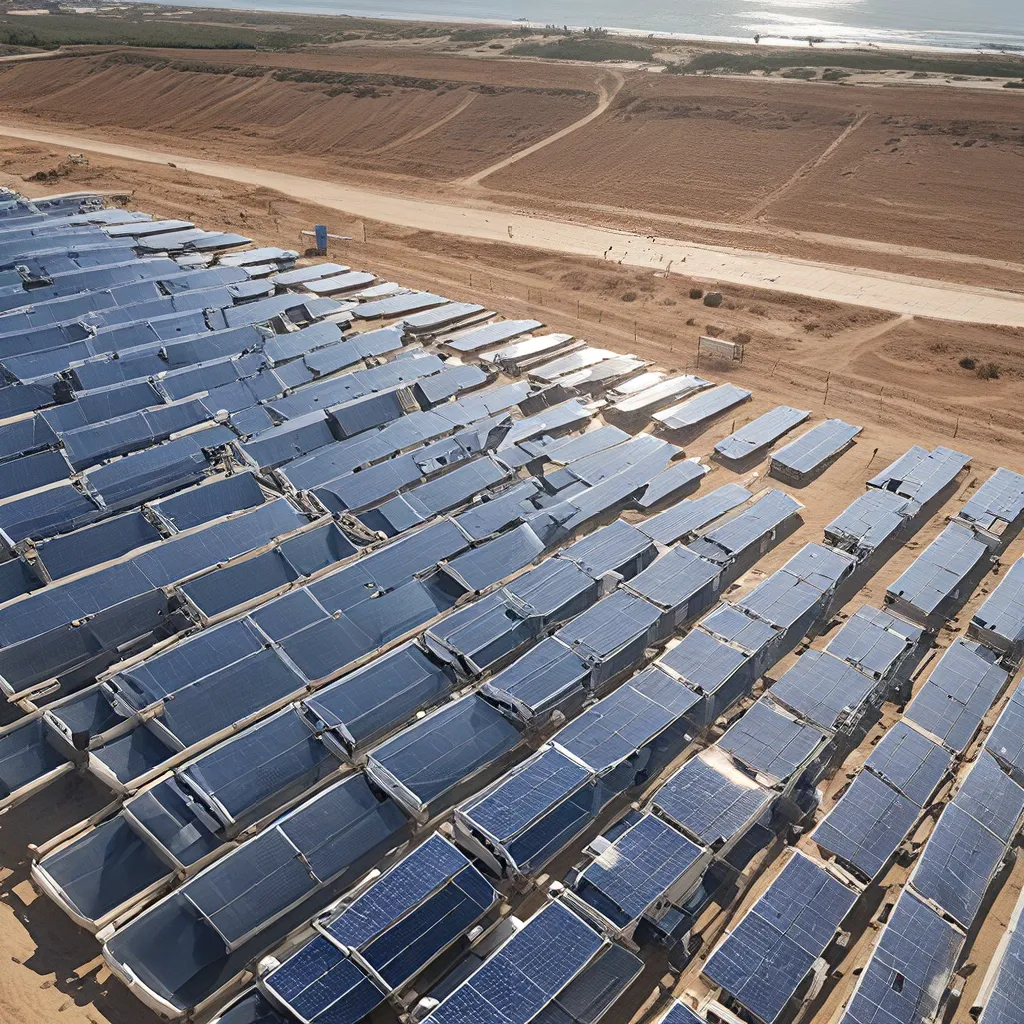
Soaking Up the Sun: Solar-Powered Desalination for Sustainable Water Supply
Plug ‘n Save Energy Products is on a mission to help households and communities harness the power of the sun for their energy needs. And today, we’re diving into an innovative solar solution that’s not only eco-friendly, but also crucial for addressing one of the world’s most pressing challenges: water scarcity.
Quenching the Thirst of Greek Islands
Picture this: you’re on the idyllic Greek island of Nisyros, surrounded by crystal blue waters and whitewashed houses clinging to the hillside. As you sip your refreshing drink, you’re blissfully unaware of the true value of that water – a precious commodity that’s in alarmingly short supply.
You see, demand for water on many Greek islands is outpacing the available supply, and climate change is only exacerbating the problem. While the western regions of Greece enjoy relatively abundant rainfall, the southern Aegean islands like Nisyros face long-term water shortages. With precipitation as low as 15 inches per year, these islands struggle to store enough water to meet the needs of their populations, which can swell tenfold during the summer tourist season.
For years, the islands had to rely on expensive water transfers from the mainland. But in the 1960s, they began exploring a game-changing solution: desalination. And now, with advancements in renewable energy technology, solar-powered desalination is emerging as the most promising long-term water solution for Greece’s thirsty islands.
Harnessing the Sun’s Power to Quench Thirst
Desalination is the process of removing salts and minerals from saline water, transforming it into freshwater that’s safe for drinking and other uses. While traditional desalination methods have been energy-intensive, the marriage of solar power and desalination is proving to be a match made in sustainability heaven.
Take the example of the solar-powered desalination unit on the island of Strongili. This modest system, costing around $16,200, uses reverse osmosis to produce a daily output of 5 cubic meters of freshwater – enough to meet the needs of a small military base. And the best part? It’s expected to pay for itself in as little as four years, thanks to the free and abundant power of the sun.
But this is just the tip of the iceberg. Larger solar-powered desalination plants on the island of Kastelorizo are now producing an impressive 400 cubic meters of water per day, at a fraction of the cost of shipping in water from the mainland. And the Greek government is committed to expanding the network of these small-scale, decentralized desalination facilities to provide each island with complete water autonomy.
The Science Behind Solar Desalination
So, how does this magical process of solar-powered desalination work? The two primary methods are reverse osmosis and multi-stage flash distillation.
Reverse Osmosis: In this method, seawater is pumped through a series of filtration membranes that remove the salt and minerals, leaving behind fresh, potable water. The process is powered by solar energy, which drives the high-pressure pumps that force the water through the membranes.
Multi-Stage Flash Distillation: This method uses heat – derived from solar thermal collectors – to evaporate the water, leaving the salt behind. The water vapor is then condensed, collected, and stored as freshwater.
Both of these techniques are highly effective, and the use of renewable solar energy ensures that the desalination process is not only sustainable but also environmentally friendly. No more reliance on fossil fuels or the energy grid, which can be particularly challenging on remote islands.
The Bigger Picture: Addressing Greece’s Water Woes
While the Greek islands have been the primary focus of solar-powered desalination efforts, the mainland is also grappling with its own water challenges. Athens, the bustling capital, is one of the cities that climate change is predicted to severely impact within the next 30 years. Water demand in the greater Athens region is growing at an unsustainable rate of around 6% per year, driven by a growing urban population and the expansion of thirsty suburban homes with lush gardens.
To address this crisis, Greece needs to take urgent measures to curb water consumption and increase efficiency across all sectors. And households can play a crucial role in this effort. Currently, Greek households account for 14% of the country’s water consumption, with an average usage of nearly 40 gallons (177 liters) per person per day – one of the highest rates in the European Union.
But the good news is that there are many simple, cost-effective water-saving techniques and technologies that can be adopted in the home. From high-efficiency showerheads and dual-flush toilets to smart dishwashers and front-loading washing machines, the options for reducing domestic water use are plentiful. And let’s not forget the power of good old-fashioned habits, like turning off the tap while brushing your teeth or taking shorter showers.
A Bright Future, Powered by the Sun
As Greece grapples with the daunting challenge of water scarcity, the emergence of solar-powered desalination offers a glimmer of hope. By harnessing the abundant and renewable power of the sun, these innovative systems are providing a sustainable solution to quench the thirst of the country’s parched islands and cities.
But the journey to water security is not solely about the technology. It’s also about cultivating a deep appreciation for the value of water and a collective commitment to conserve this precious resource. Because when we all do our part – from installing water-efficient appliances to being mindful of our water usage – we can ensure a brighter, more refreshing future for generations to come.
So, here’s to soaking up the sun and quenching our thirst, one sustainable sip at a time. Plug ‘n Save Energy Products is proud to be a part of this crucial effort, powering a more sustainable and water-secure future for all.